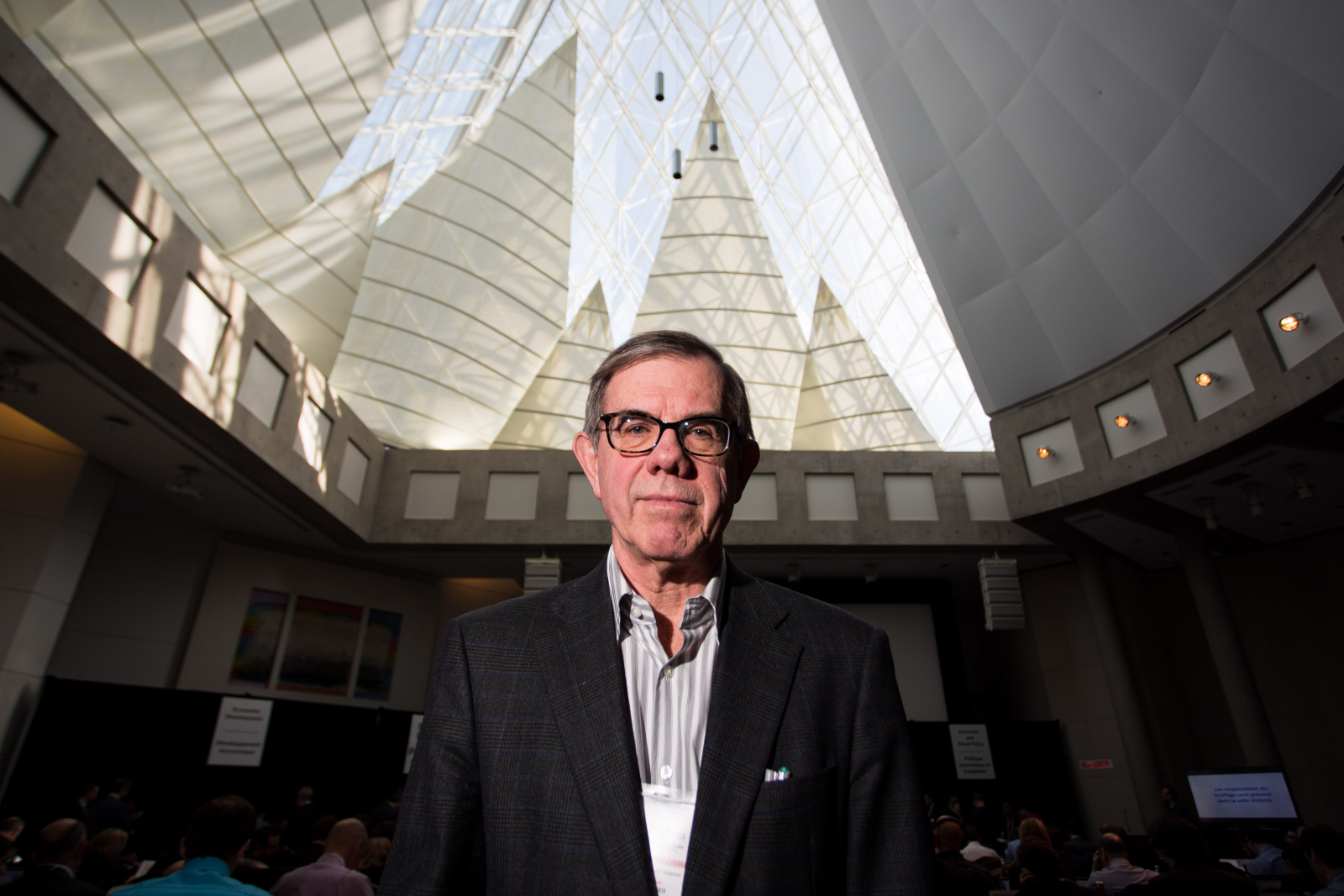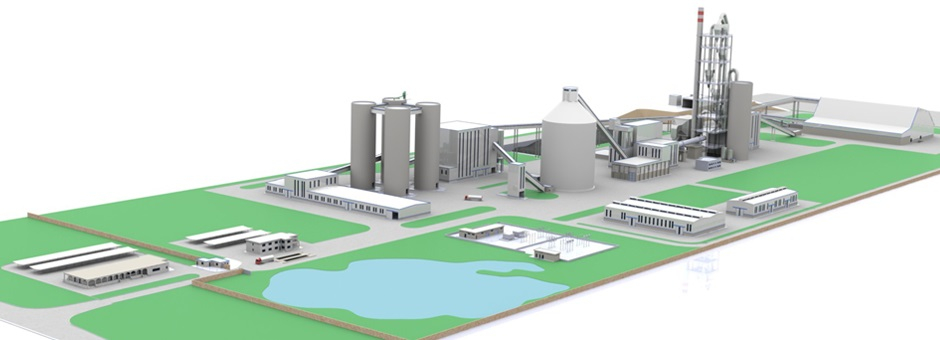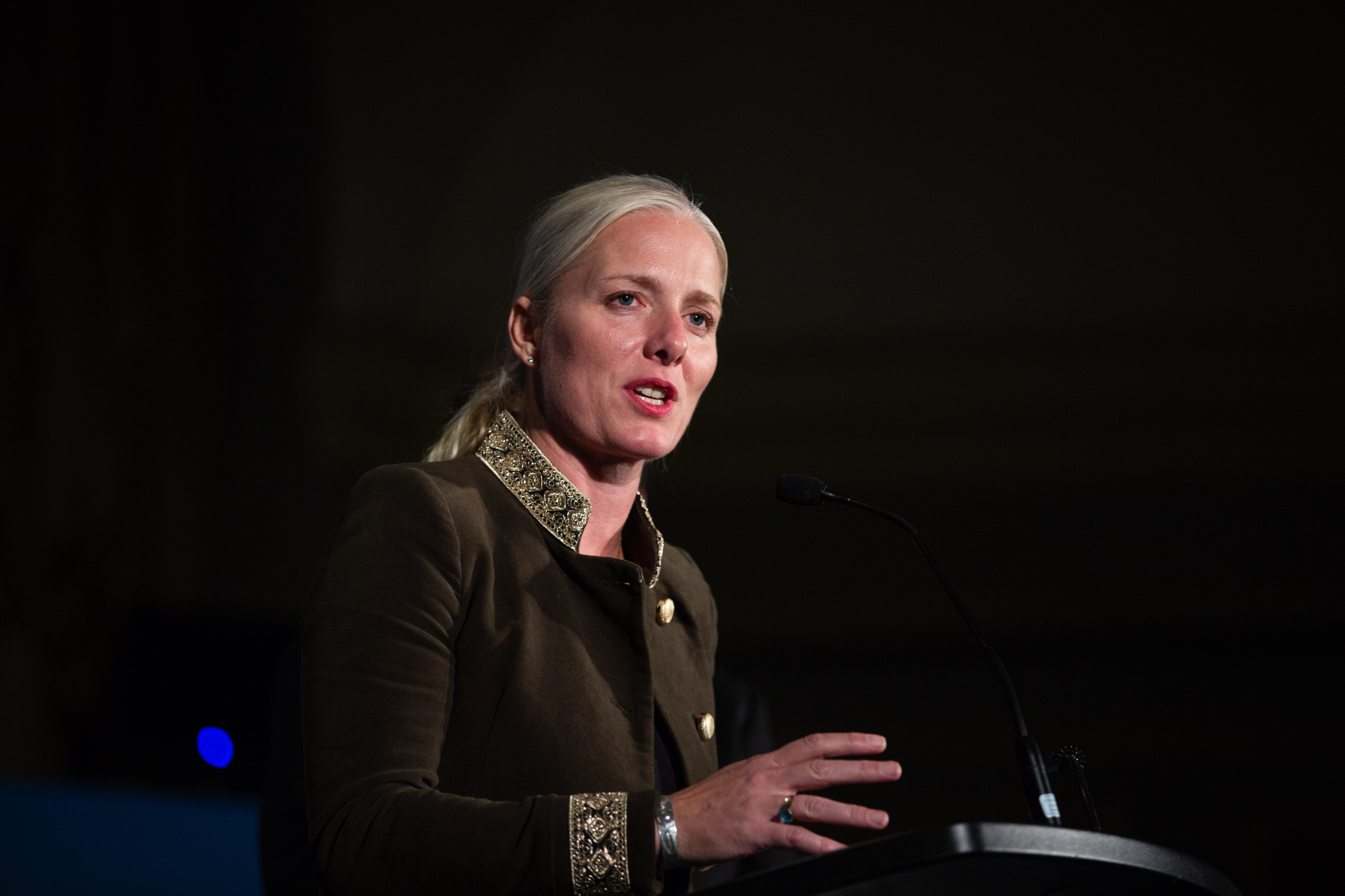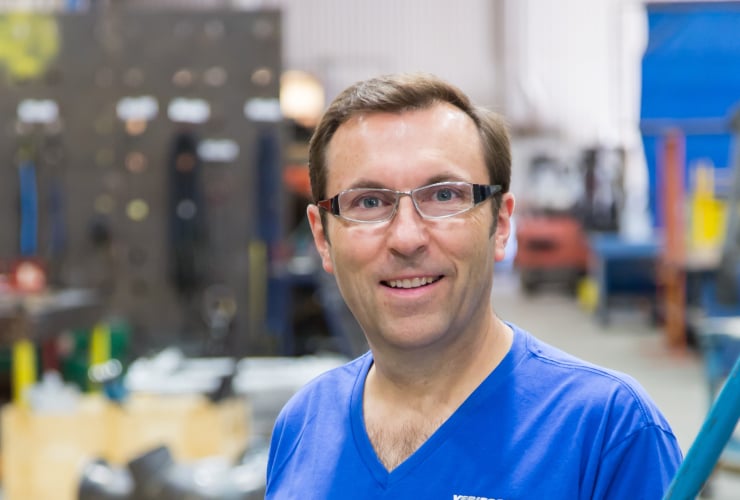Environmentalists are seeking a federal review of a planned giant cement plant that would raise pollutants, dust, noise and traffic near a village on the Ottawa River.
The Canadian arm of an Italian multinational company soon expects to be producing over a million tonnes of cement every year from a 40-hectare plant halfway between Montreal and Ottawa.
Colacem Canada says its plan for a sprawling, 52-building plant just west of L’Orignal, Ontario will create roughly 200 jobs over two years and bring “significant economic benefits to the local community,” with long-term employment for 300 people once completed.
The plant could also produce one megatonne per year of carbon dioxide, which would put it in the top dozen or so carbon polluters in the province according to 2016-17 emissions data. That and other factors have galvanized a local citizens group in opposition to the project and caught the eye of environmental groups.
Intended as a 24/7 operation, environmentalists say the L’Orignal plant would, in addition to CO2, emit 18 tonnes a day of toxic pollutants like nitrogen oxides, particulate matter and sulphur dioxide. The latter could threaten Montreal with acid rain, given that the plant is 70 kilometres upwind from the major city.
Despite this, the proposed plant is not yet facing major provincial or federal environmental reviews, and some key local officials are backing it. The company says the plant will “utilize the most advanced production technology available to achieve efficient energy consumption and minimize impact on surrounding ecosystems.”
A push to rezone the land from rural to heavy industrial use, a necessary step to allow the firm to apply for various provincial permits, has been making its way through hearings of the Local Planning Appeal Tribunal — which replaced the Ontario Municipal Board this spring — although these have been indefinitely stalled over a lack of bilingual staff.
The plant is sure to transform the region, called United Counties of Prescott and Russell, of which L'Orignal is the county seat, as cement manufacturing is a heavy industrial undertaking, and the proposed plant would have one of the largest chimneys and emit some of the largest amounts of carbon pollution out of the 18 major cement plants in Canada.

Cement industry one of the larger carbon polluters
Cement, the substance that holds concrete together, is made by crushing and grinding limestone and other material and then heating it at extremely high temperatures before pulverizing it again, an energy-intensive process.
This makes the cement industry one of the larger producers of carbon dioxide in the world, accounting for at least five per cent of all global emissions. Out of the 90 companies that have caused two-thirds of carbon pollution created by human activity, only seven were not fossil fuel energy companies; those seven were cement manufacturers.
Nature Canada, Ontario Nature, Nature Quebec and the VanKleek Hill and District Nature Society are calling on Environment and Climate Change Minister Catherine McKenna to designate the proposed plant for a federal review.
In an Oct. 5 letter to these groups obtained by National Observer, the Canadian Environmental Assessment Agency (CEAA) said it had acknowledged their concerns and will “provide advice to the minister” on the issue.
“We got a response very quickly back from the agency saying, ‘We’re looking at it,’” said Stephen Hazell, director of conservation and general counsel for Nature Canada. “The question is, what are you doing — Ontario and Canada — to make sure that this company is minimizing its greenhouse gas emissions and its acid gas emissions?”
Under Canada’s current environmental assessment act, the minister may designate a “physical activity” to undergo an environmental review if, in the minister’s opinion, the activity will cause “adverse environmental effects” or there is “public concerns related to those effects.”
That review could take the form of a federal panel, or a joint federal-provincial panel. In this case, it would likely be a three-person panel with Ottawa providing two officials and Queen's Park providing a third, said Hazell.
National Observer asked McKenna’s office if the minister has taken note of the request from Nature Canada and the other groups, whether she spoke with local officials about the proposed plant, whether she agreed its high estimated pollution is a significant environmental factor, and whether she would be designating the project for review.
Caroline Thériault, press secretary for the minister, referred all questions to the CEAA. The agency's communications advisor Alison Reilander said it is still "gathering information to support its recommendation to the minister as to whether to designate the project." If the minister takes that position, a notice gets posted on the assessment registry page.
Ontario 'continues to review' two applications
The environmental groups also want Ontario Environment Minister Rod Phillips to support a federal review.
Such a project would have almost certainly fell under the former Wynne government’s cap and trade regime, which the Ford government is moving to cancel. That regime mandated that a facility partake in carbon pricing if it put more than 25,000 tonnes of emissions in the air each year.
It is unclear what Phillips will be doing now to discourage such pollution from large projects, although his government did announce consultations towards a new climate plan. Emily Hogeveen, press secretary for Phillips, referred all questions to Ontario's Ministry of the Environment, Conservation and Parks.
The ministry's spokesman Gary Wheeler said ultimately the federal government is responsible for the decision, but the ministry "will work with the federal government to ensure processes are being followed."
He said the ministry "continues to review" two environmental compliance approval applications from the company for the proposed site: one for air and noise emissions and another for stormwater management.
Asked about how Ontario would ensure emissions from the plant are minimized, Wheeler said the compliance approvals would include terms and conditions that require the company to keep records that the ministry can use to verify compliance with its "standards and requirements."
"In this case, the ministry consulted with the public during its environmental decision-making process and the company’s proposals for sewage and air and noise environmental compliance approvals were subject to 45-day public comment periods on the environmental registry," Wheeler said.
"The ministry received 200 comments during the comment periods. The ministry has continued to accept comments on the applications and all comments received are being considered by the ministry as part of our review process."
The ministry is also looking at two consultation reports prepared by Colacem Canada related to open houses in 2016 and 2018 that it held in L'Orignal and Grenville, Quebec, said Wheeler.

Proposed provincial park in region
National Observer also asked Colacem Canada if it agreed with the environmental groups' estimation of pollution levels at the proposed site, whether it would be taking any measures to minimize pollution and whether it had been in touch with Ottawa on the issue. A representative did not return questions before publication.
Some businesses are moving to seize the opportunity that carbon-producing manufacturing presents. For example, an Ontario startup called Tandem Technical breaks down exhaust gases into compounds that can be assembled into ingredients for products like toothpaste. That firm told National Observer in May that it was seeing demand from cement manufacturers.
Other companies like Halifax-based CarbonCure are taking carbon pollution captured by industrial emitters and injecting it into freshly-mixed concrete.
Colacem already owns and operates a quarry next to the land it wants to develop into the cement plant. The project site is two kilometres from the Ottawa River and eight kilometres from Alfred Bog that is set to become a provincial park.
Its immediate neighbours would include a cluster of residents, farms and farmland, soil processing and meat packing facilities, and L’Orignal Christian Academy, according to an independent assessment by professional planner Mark Dorfman last spring.
The plant would be serviced by an estimated "55 trucks during the afternoon peak hour entering and leaving the site, for a total of 110 trucks," Dorfman’s report stated.
It would also contain a 125-metre chimney for the kiln and draw water from nearby quarry pits.
Late last year, residents in St. Marys, Ont. north of London raised concerns about smelly emissions from their local cement plant. Hazell said he’s concerned about the potential for the L’Orignal location to release pollutants eastward.
“This (L’Orignal) plant is 70 kilometres upwind from Montreal, so any acid rain that comes from this plant, with prevailing westerly winds, it’s going to come right on top of it,” he said.
In Quebec, a $1.45 billion cement plant in the Gaspé region was inaugurated last year following intense controversy. It was estimated that it added to the province’s greenhouse gas emissions on its own by an estimated two per cent, and added six per cent to the industrial sector as a whole.
Colacem has indicated on its website that the L’Orignal location would have “state of the art technology” that includes a “hybrid air filter” for dust control. It has committed to “zero wastewater discharges.”
The company cites the finding of its own independent consulting services firm Golder Associates, that the plant’s air quality emissions “are not predicted to significantly impact the local air quality.”
But the citizens group, Action Champlain, has put up a long list of complaints, including the large dispersal area of the chimney, the day-and-night operation of heavy machinery, truck traffic on the local highway and more quarry activity.
Hazell said he is pushing for a federal review to "get some authenticated numbers from the company as to what the emissions are going to be."
Editor's note: This story was updated at 7:58 p.m. on Oct. 22, 2018 to clarify that the estimate of 110 trucks refers to what would be generated in the afternoon peak hour of operation. It was updated again at 2:31 p.m. EDT on Oct. 25, 2018 to include a response from the Ontario Ministry of the Environment, Conservation and Parks.
I am concerned about the very
I am concerned about the very notion that cement manufacturers “cause” carbon pollution. That may be a politically-correct way to put it among readers of the National Observer, but it seems to me fundamentally dishonest. Can we be clear that every time we use concrete in our lives we are the ones contributing to climate change? While we would like cement manufacturers in Canada to use the very best approach to managing their emissions, I don’t see the logic for targeting a particular concrete plant in Canada over any other in the world for a climate change perspective. If concrete is a more energy inefficient construction material than another, or if the construction sector itself needs to shrink as a part of today’s modern economy, let's put a huge carbon tax on concrete (and any other source of carbon emissions). I can't see how preventing the production of energy intensive things in Canada solves the problem and don’t think it is going to win us very many friends in the industrial sector as an approach to climate change in this country.
You have a mistaken premise
You have a mistaken premise there. The thing about concrete is not that there are emissions associated with the industrial process of making it because like the trucks and machinery are burning diesel or whatever. The problem is the recipe. Apparently the concrete ITSELF actually emits carbon dioxide.
https://en.wikipedia.org/wiki/Environmental_impact_of_concrete#Carbon_di...
But this is optional. I have heard of at least two new technologies for making concrete which result in the concrete actually ABSORBING CO2. One company involved in doing this is based in Quebec, I believe. So maybe the minister could suggest that, if they want to avoid troubles, the company building this thing should look into a deal with the company doing the green tech.
Indeed, the startup is
Indeed, the startup is Carbicrete, located in Montreal. It is one of ten finalists in the Carbon XPrize. Ref. .
I stand to be better educated
I stand to be better educated, but as I understand it, cement is made from limestone, which has to be heated to transform CaCO3 into CaO and C02. I don't know how you get around that without some form of black magic. According to the Wikipedia article cited, "900 kg of CO2 are emitted for the fabrication of every ton of cement, accounting for 88% of the emissions associated with the average concrete mix." How you put the C02 back in and stick get concrete out of it is a mystery to me. Sort of like carbon capture - the best way to capture carbon is to leave it in the ground in the first place! Anyway, we won't solve these things here. My point is that it's the consumption of carbon intensive economic goods that must be reduced. Targeting the producers of those goods is not the right target. It may be politically easier in some ways, but ultimately, we all of us have to consume less of those goods and spend more time walking in the park. Let's be honest about this.
This cement plant is a prime
This cement plant is a prime example of a "development" that should not happen if we hope to protect the lives of our grandchildren.






Comments